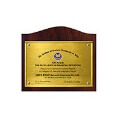

How to Breathe While Running?
Do you ever feel out of breath too quickly while running? Proper breathing is what your routine demands. The way you breathe can affect your stamina, comfort, and overall performance. Whether you're a beginner or an experienced runner, understanding your breath can transform your experience. Small changes in your breathing pattern and posture can make a big difference. Let’s find out how simple breathing techniques can help you run more efficiently and reduce fatigue while running.
Simple Breathing Tips while Running
Health experts suggest that controlled, rhythmic breathing supports better oxygen flow and reduces strain. Here are some simple, effective breathing tips on how to breathe while running:
1. Try Belly Breathing (Diaphragmatic Breathing)
Instead of shallow chest breaths, breathe deeply into your belly. Inhale through your nose so your stomach expands, then slowly exhale through pursed lips. This technique engages the diaphragm effectively, improving oxygen intake and lung capacity. Practicing this method regularly can enhance your breathing efficiency during runs .
2. Maintain Proper Posture
Stand tall with a straight back and relaxed shoulders. Avoid leaning forward too much. Good posture gives your lungs more room to expand, making it easier to breathe deeply and steadily while running.
3. Practice Rhythmic Breathing
Match your breathing to your steps. For example, breathe in for three steps and out for two. This keeps your breathing steady, reduces the chances of getting side stitches, and helps you maintain a good pace.
4. Pursed Lip Breathing
Breathe in through your nose and out slowly through slightly pursed lips, like you’re blowing out a candle. This method helps keep your airways open longer, reducing shortness of breath and improving lung function while running.
5. Stay Hydrated
Drinking enough water keeps your airways moist, making it easier to breathe. Dry airways can make breathing feel harder, especially during long runs or in hot weather.
6. Be Mindful of Environmental Conditions
Cold, dry air can make breathing difficult, especially for people with asthma or other respiratory issues. Cover your mouth and nose with a scarf or mask to warm the air before it enters your lungs.
Conclusion
Breathing right while running isn’t just a technique—it supports endurance, comfort, and overall health. Still, even the best habits can't prevent every health issue. From respiratory issues to injuries, being prepared is a must. That’s where having a health insurance policy plays a vital role. It offers financial protection and access to care without added stress.
Most policies provide coverage for doctor visits, diagnostic tests, emergency care, hospital stays, surgeries, and even follow-up treatments—ensuring you're covered when it matters most.
One of the important components of our overall wellness is also being financially secured. Healthcare emergencies can happen any time, but a good health insurance policy can protect you from such uncertain situations. To know more about Wellness and other health related tips, visit the wellness corner.
Sources: healthline.com, onepeloton.com, rush.edu
Disclaimer: This blog provides general information and discussions about health and related subjects. The information and other content provided in this blog, website or any linked materials are not intended and should not be considered or used as a substitute for medical advice, diagnosis or treatment. Kindly contact your doctor before starting a new medicine or health regime.
Related Articles
Yoga Breathing Exercises & Benefits for a Healthy Lifestyle
Tips For Asthama & Breathing Problem In Rainy Season
How To Do Anulom Vilom Pranayama Steps and its Benefits
How To Reduce Stress With Mindfulness Techniques
Yoga Poses for Sinus Infection - Exercises for Sinus Relief
Published on July 10, 2025















 Health Insurance
Health Insurance  Travel Insurance
Travel Insurance  Car Insurance
Car Insurance  Cyber Insurance
Cyber Insurance  Critical Illness Insurance
Critical Illness Insurance
 Pet Insurance
Pet Insurance
 Bike/Two Wheeler Insurance
Bike/Two Wheeler Insurance  Home Insurance
Home Insurance  Third Party Vehicle Ins.
Third Party Vehicle Ins.  Tractor Insurance
Tractor Insurance  Goods Carrying Vehicle Ins.
Goods Carrying Vehicle Ins.  Passenger Carrying Vehicle Ins.
Passenger Carrying Vehicle Ins.  Compulsory Personal Accident Insurance
Compulsory Personal Accident Insurance  Travel Insurance
Travel Insurance  Rural
Rural